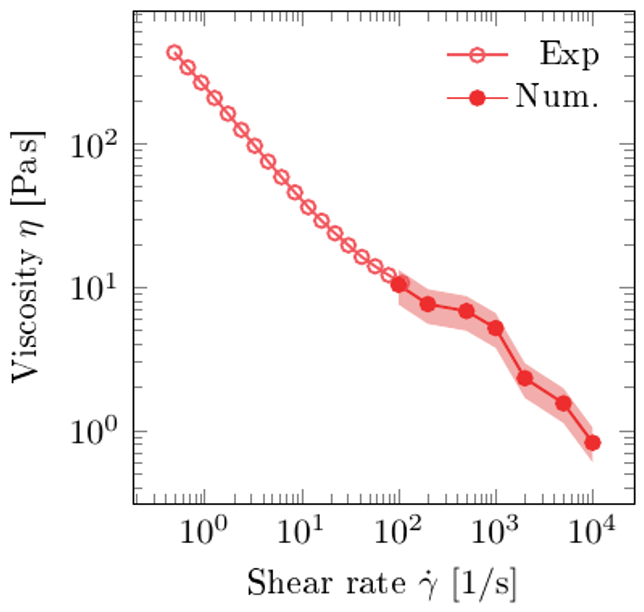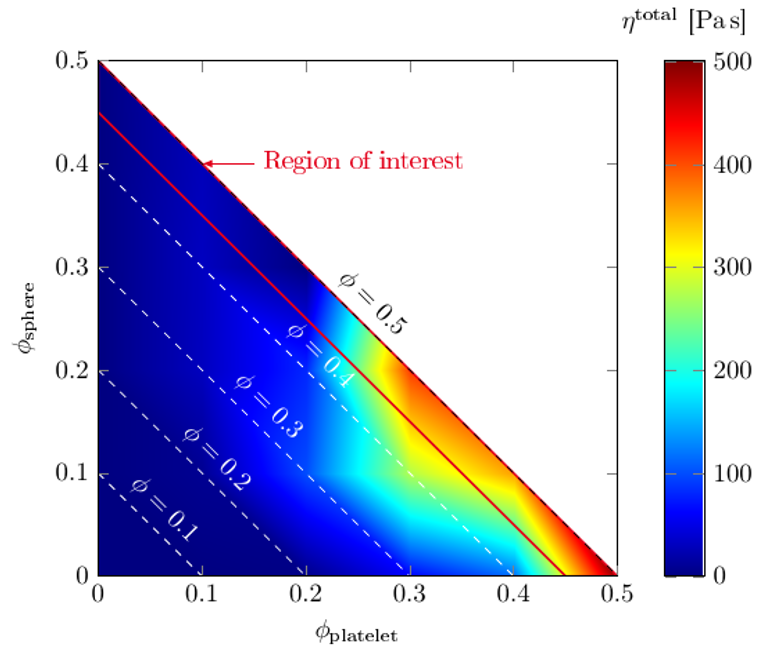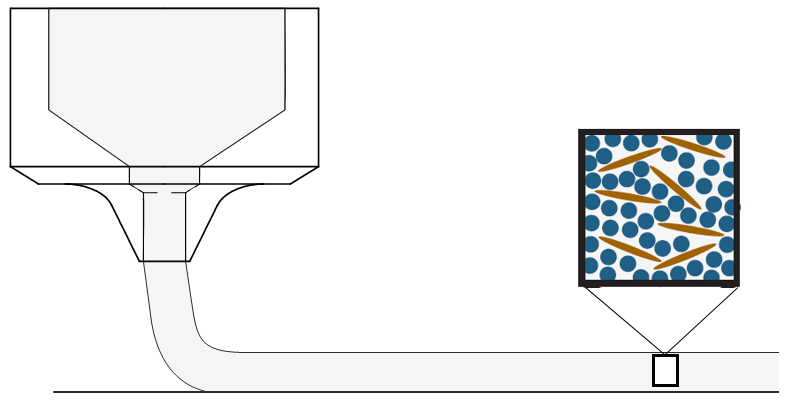Robocasting: Tayloring paste rheology
Introduction
Robocasting is an example of material extrusion based additive manufacturing. A paste is printed through a nozzle to form continuous rod-like filaments. In this particular example, we consider a ceramic paste that, on a microscopic scale, consists of a particulate composition of various shapes and sizes. This composition determines the flow properties during printing and the material properties of the final specimen. Hence, customized paste compositions are required to adjust the material properties to the needs of the process. The formulation of such an ideal paste, however, takes long and therefore requires expensive resource. In oder to reduce the amount of trial-and-error cycles for finding this optimal paste, numerical simulations help to understand the influence of the paste composition on the flow properties.
The task
The challange is to establish a simulation model that predicts the rheology of the paste as a function of the paste composition. In this study, the paste consists of a combination of two types of particles with either platelet-like or a sphere-like shape. This work is carried out within a DFG project in collaboration with the Department of Glass and Ceramic at the University of Erlangen-Nuremberg.
Results

The numerical model is first validated against experimental data and then it is used to learn about the influence of the paste composition on its flow behavior. For the validation, we predict the shear-dependent viscosity behavior of a paste of a given composition of sphere-like and platelet-like particles. Experimentally measured and numerically predicted data both describe an equivalent rheological behavior.

The composition of the paste affects the viscosity as shown in the figure on the left. In a parameter study, we vary the amount of platelet-like and sphere-like particles within the paste. Interestingly, the resulting viscosity is only a weak function of the total filling fraction but strongly influenced by the amount of platelets.
 Fraunhofer Institute for Mechanics of Materials IWM
Fraunhofer Institute for Mechanics of Materials IWM
